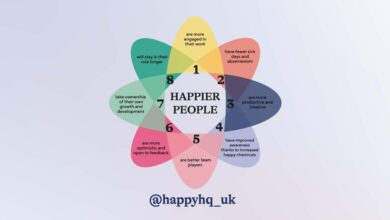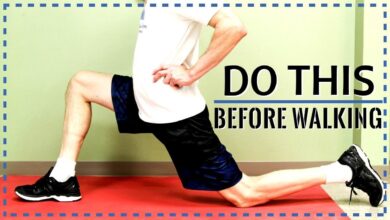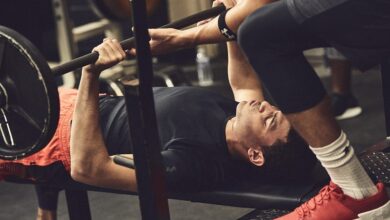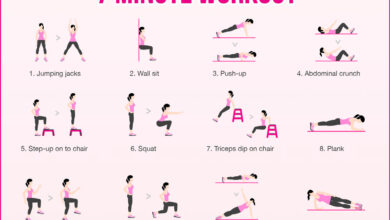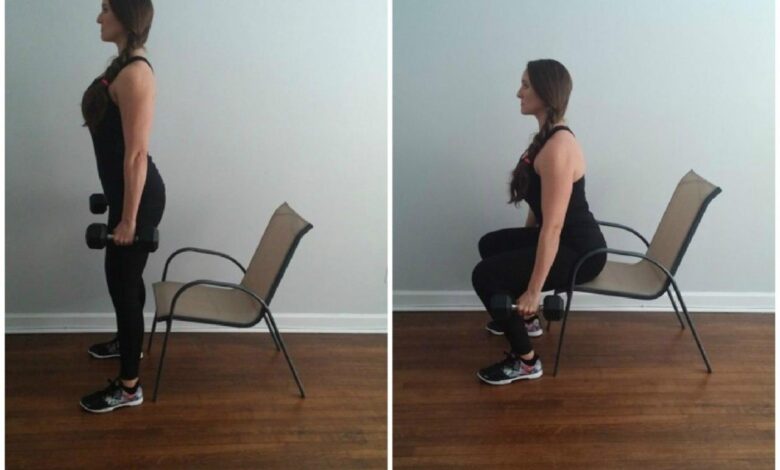
Bone Density Building Exercises: Strengthen Your Bones
Bone density building exercises are crucial for maintaining strong bones and preventing osteoporosis, a condition that weakens bones and increases fracture risk. As we age, bone density naturally declines, but regular exercise can help slow this process and even increase bone strength.
It’s not just about lifting weights, though. There’s a whole range of exercises that can target different aspects of bone health, from weight-bearing activities to impact exercises.
This blog post will delve into the world of bone density building exercises, exploring different types, their benefits, and how to incorporate them into your routine safely and effectively. We’ll also discuss the importance of nutrition and lifestyle factors in supporting bone health.
Understanding Bone Density
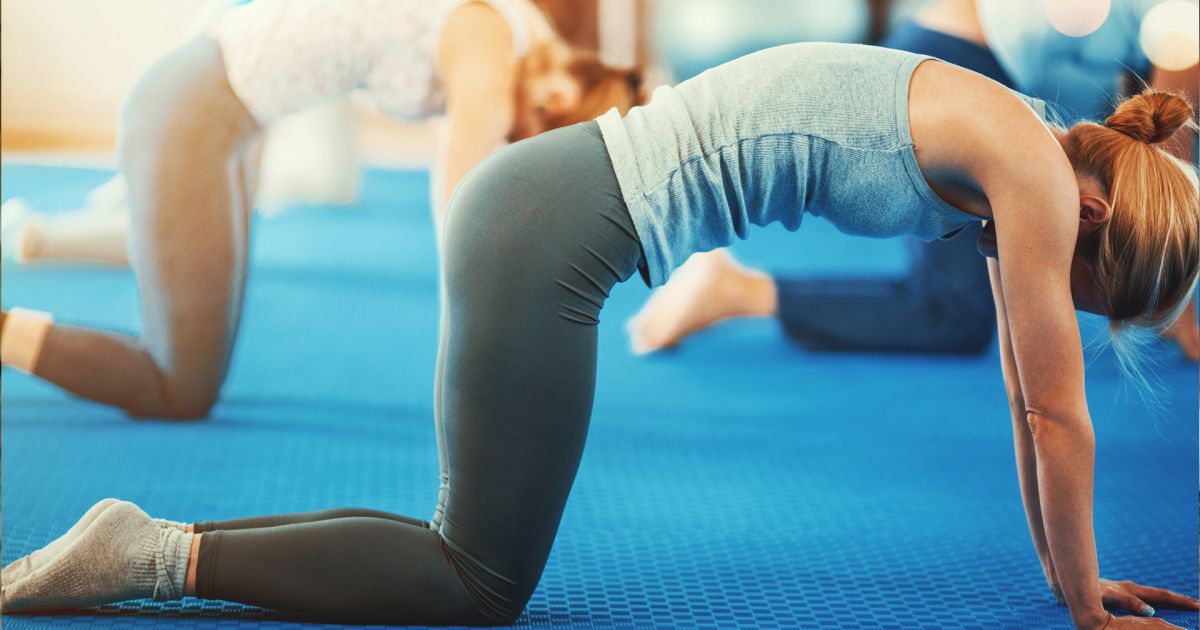
Bone density is a crucial aspect of overall health, playing a vital role in supporting our bodies and protecting our organs. It’s a measure of how much calcium and other minerals are packed into a given area of bone.
Strong, dense bones are essential for maintaining mobility, preventing fractures, and supporting overall well-being.
Factors Contributing to Bone Density Loss
Bone density naturally declines with age, but various factors can accelerate this process.
- Hormonal Changes:Menopause in women and aging in men lead to hormonal shifts that can impact bone health.
- Nutritional Deficiencies:Insufficient intake of calcium, vitamin D, and other essential nutrients can hinder bone formation.
- Lack of Physical Activity:Regular weight-bearing exercises stimulate bone growth and maintenance. Sedentary lifestyles can contribute to bone loss.
- Medical Conditions:Certain conditions, such as thyroid disorders, rheumatoid arthritis, and celiac disease, can negatively impact bone density.
- Medications:Some medications, including corticosteroids and certain cancer treatments, can affect bone health.
- Lifestyle Factors:Smoking, excessive alcohol consumption, and low body weight can increase the risk of bone loss.
Osteoporosis and Its Risks
Osteoporosis is a condition characterized by weakened bones, making them brittle and prone to fractures. It’s a silent disease, often diagnosed after a fracture occurs.
Building bone density is a lifelong endeavor, and incorporating strength training is a key component. If you’re new to the world of weights, check out this beginners guide to strength training for a solid foundation. Once you’ve mastered the basics, you can start incorporating exercises like squats, lunges, and rows, all of which are fantastic for boosting bone density and overall strength.
- Risk Factors:Factors that increase the risk of osteoporosis include age, family history, low body weight, certain medical conditions, and lifestyle choices.
- Consequences:Osteoporosis can lead to painful fractures, particularly in the hip, spine, and wrist. These fractures can significantly impact mobility, independence, and quality of life.
- Prevention and Management:Maintaining a healthy lifestyle, including a balanced diet rich in calcium and vitamin D, regular weight-bearing exercises, and avoiding smoking and excessive alcohol consumption, is crucial for preventing osteoporosis. Early diagnosis and treatment are essential for managing the condition and reducing fracture risk.
Types of Exercises for Bone Density Building
Building strong bones is essential for overall health and well-being, especially as we age. A combination of weight-bearing, resistance training, and impact exercises can significantly improve bone density.
Weight-Bearing Exercises
Weight-bearing exercises are activities that put stress on your bones, stimulating bone growth and increasing density. They involve using your body weight or external weights to challenge your muscles and bones. Examples include:
- Walking
- Running
- Hiking
- Stair climbing
- Dancing
- Tennis
- Basketball
Resistance Training
Resistance training involves using weights or resistance bands to challenge your muscles. This type of exercise is particularly effective for increasing bone density in the arms, legs, and spine. Examples include:
- Weightlifting
- Using resistance bands
- Bodyweight exercises like push-ups, squats, and lunges
Impact Exercises
Impact exercises are activities that involve jumping or high-impact movements, putting stress on your bones and stimulating bone growth. Examples include:
- Jumping jacks
- Skipping rope
- Running
- High-impact aerobics
Weight-Bearing Exercises
Weight-bearing exercises are essential for building bone density and reducing the risk of osteoporosis. These exercises involve working against gravity, putting stress on your bones and stimulating new bone growth.
Sample Weight-Bearing Exercise Routine for Beginners
This routine is designed for beginners and can be adjusted based on your fitness level. It’s important to consult your doctor before starting any new exercise program.
- Warm-up: Begin with 5-10 minutes of light cardio, such as walking or jogging in place. This helps prepare your muscles and joints for exercise.
- Squats: Stand with your feet shoulder-width apart and lower your body as if you’re sitting in a chair. Keep your back straight and your core engaged. Repeat 10-15 times.
- Lunges: Step forward with one leg, bending both knees to a 90-degree angle. Make sure your front knee is directly above your ankle. Repeat 10-15 times on each leg.
- Push-ups: Start in a plank position with your hands shoulder-width apart. Lower your body towards the floor, keeping your core engaged. Push back up to the starting position. Repeat 8-10 times.
- Plank: Hold a plank position, engaging your core and keeping your body in a straight line from head to heels. Aim for 30 seconds, gradually increasing the duration as you get stronger.
- Calf Raises: Stand with your feet shoulder-width apart and raise your heels off the ground, focusing on engaging your calf muscles. Repeat 15-20 times.
- Cool-down: Finish with 5-10 minutes of stretching to help your muscles recover. Hold each stretch for 30 seconds.
Proper Form and Technique
Proper form is crucial for effective and safe weight-bearing exercises.
Building bone density requires a multifaceted approach, incorporating weight-bearing exercises like squats and lunges, along with a balanced diet rich in calcium and vitamin D. While some low-carb diets focus on restricting carbohydrates, it’s crucial to remember that why quality of carbs matters on a low carb diet , especially when it comes to bone health.
Choosing complex carbohydrates like those found in whole grains and vegetables provides essential nutrients that support bone growth and maintenance. By combining targeted exercises with a well-rounded nutritional plan, you can effectively enhance bone density and promote overall well-being.
- Squats: Keep your back straight and core engaged throughout the movement. Avoid letting your knees go past your toes.
- Lunges: Maintain a straight back and engage your core. Make sure your front knee stays aligned with your ankle.
- Push-ups: Keep your body in a straight line from head to heels. Engage your core and avoid sagging your hips or shoulders.
- Plank: Maintain a straight line from head to heels, engaging your core and glutes. Avoid letting your hips sag or your shoulders round.
- Calf Raises: Engage your calf muscles and raise your heels off the ground, keeping your toes on the floor. Avoid lifting your toes.
Frequency and Intensity, Bone density building exercises
For optimal results, aim for at least 30 minutes of weight-bearing exercise most days of the week. Start with a lower intensity and gradually increase the duration and difficulty as you get stronger.
It’s essential to listen to your body and rest when needed. If you experience any pain, stop the exercise and consult your doctor.
Resistance Training
Resistance training is an essential component of a comprehensive bone density building program. It involves using external resistance, such as weights, resistance bands, or your own body weight, to challenge your muscles and bones. This type of training stimulates bone formation, leading to increased bone density and strength.
Resistance Training Exercises for Bone Density Building
Resistance training exercises are categorized based on the target muscle groups, equipment required, and examples.
| Target Muscle Group | Equipment Needed | Example Exercises |
|---|---|---|
| Legs | Barbell, dumbbells, weight machine | Squats, lunges, leg press, hamstring curls, calf raises |
| Arms | Dumbbells, resistance bands | Bicep curls, tricep extensions, overhead press, rows |
| Back | Barbell, dumbbells, resistance bands | Pull-ups, lat pulldowns, rows, deadlifts |
| Core | None | Plank, side plank, crunches, Russian twists |
Selecting Appropriate Weights and Repetitions
The intensity of resistance training is determined by the weight used and the number of repetitions performed. It’s crucial to select weights that challenge your muscles but allow you to maintain proper form throughout the exercise.
Start with a weight that allows you to complete 8-12 repetitions with good form.
As you get stronger, you can gradually increase the weight or the number of repetitions. It’s also essential to listen to your body and take rest days to allow your muscles to recover.
Impact Exercises
Impact exercises are a crucial component of a bone density building program. They involve activities that exert force on the bones, stimulating bone growth and strengthening them. This force, known as “mechanical loading,” triggers the body to increase bone density.
Building bone density requires a combination of weight-bearing exercises and a balanced diet. While fruit is great for vitamins and minerals, it’s important to be mindful of the sugar content in juices. You might be surprised by the amount of sugar packed into those seemingly healthy drinks! To learn more about the hidden sugar bombs in juices, check out this article on the sugary truth and the downfall of juice.
Focus on whole fruits and vegetables, along with calcium-rich foods like dairy and leafy greens, to fuel your bone-building journey.
Examples of Impact Exercises
Impact exercises are characterized by the force exerted on the bones during each movement. Here are some examples of impact exercises that can be incorporated into your routine:
- Jumping Jacks:A classic exercise that involves jumping with feet apart and then together while raising your arms overhead. This simple exercise provides a significant impact on the bones, particularly in the lower body.
- Running:Running is a high-impact exercise that engages multiple muscle groups and puts considerable force on the bones, particularly in the legs and feet. It is an excellent way to build bone density and improve cardiovascular health.
- High-Impact Aerobics:This type of aerobics incorporates movements such as jumping, hopping, and leaping, creating a significant impact on the bones. It is a great way to improve bone density and overall fitness.
- Stair Climbing:Climbing stairs is a simple yet effective impact exercise that strengthens the bones in the legs and feet. It is a convenient way to incorporate impact into your daily routine.
- Jumping Rope:This exercise involves jumping over a rope, creating a high-impact force on the bones. It is an excellent way to improve bone density and coordination.
Potential Risks and Precautions
While impact exercises are beneficial for bone health, it’s important to be aware of potential risks and take necessary precautions:
- Risk of Injury:High-impact exercises can increase the risk of injuries, particularly in individuals with pre-existing conditions or those who are new to exercise. It is crucial to start slowly and gradually increase the intensity and duration of exercise.
- Joint Stress:Impact exercises can put significant stress on the joints, especially the knees, ankles, and hips. Individuals with joint problems should consult a healthcare professional before engaging in high-impact activities.
- Proper Form:Maintaining proper form during impact exercises is essential to minimize the risk of injury. It is advisable to consult a qualified fitness professional to ensure correct technique.
- Gradual Progression:It is important to start with low-impact exercises and gradually increase the intensity and duration of impact exercises as your body adapts. This gradual progression minimizes the risk of injury and allows your body to adjust to the increased stress.
- Listen to Your Body:Pay attention to your body’s signals and rest when needed. If you experience pain or discomfort, stop the exercise and consult a healthcare professional.
Nutrition for Bone Health
A balanced diet is essential for maintaining strong bones throughout life. It provides the necessary nutrients for bone growth, development, and repair. While exercise plays a crucial role in bone health, nutrition is equally important in supporting bone density.
Key Nutrients for Bone Health
Consuming a diet rich in specific nutrients is vital for bone health. These nutrients contribute to bone formation, mineral density, and overall bone strength.
- Calcium: The primary mineral component of bones, calcium is essential for bone growth and maintenance. It helps build bone density and prevents bone loss.
- Vitamin D: Vitamin D aids in calcium absorption from the gut, allowing the body to utilize calcium effectively for bone health. It also plays a role in bone remodeling and growth.
- Magnesium: Magnesium is involved in bone formation and helps regulate calcium levels in the body. It also supports bone strength and density.
Food Sources of Key Nutrients
Incorporating a variety of foods rich in these key nutrients into your diet can significantly contribute to bone health.
Calcium
- Dairy Products: Milk, yogurt, cheese, and other dairy products are excellent sources of calcium.
- Leafy Green Vegetables: Kale, spinach, collard greens, and bok choy are rich in calcium and other essential nutrients.
- Fortified Foods: Some plant-based milk alternatives, orange juice, and bread are fortified with calcium.
- Sardines and Salmon: These fish contain calcium, along with omega-3 fatty acids beneficial for overall health.
Vitamin D
- Sunlight Exposure: The body naturally produces vitamin D when exposed to sunlight.
- Fatty Fish: Salmon, tuna, and mackerel are good sources of vitamin D.
- Egg Yolks: Egg yolks contain vitamin D, along with other essential nutrients.
- Fortified Foods: Milk, yogurt, orange juice, and some cereals are fortified with vitamin D.
Magnesium
- Green Leafy Vegetables: Spinach, kale, and Swiss chard are rich in magnesium.
- Nuts and Seeds: Almonds, cashews, pumpkin seeds, and sunflower seeds are good sources of magnesium.
- Avocado: Avocado is a rich source of magnesium, along with healthy fats.
- Dark Chocolate: Dark chocolate with a high cocoa content is a good source of magnesium.
Lifestyle Factors for Bone Health
In addition to exercise and nutrition, several lifestyle factors significantly impact bone health. These factors are often overlooked but can have a profound influence on bone density and overall skeletal well-being.
The Impact of Smoking and Alcohol Consumption
Smoking and excessive alcohol consumption are detrimental to bone health.
- Smoking: Nicotine, a primary component of cigarettes, has been shown to interfere with bone formation and increase bone resorption, leading to reduced bone density and an increased risk of fractures. Smoking also negatively impacts calcium absorption and reduces blood flow to bones, further hindering bone health.
- Alcohol Consumption: Excessive alcohol intake can also impair bone health by interfering with calcium absorption, reducing bone formation, and increasing bone resorption. It also affects the production of vitamin D, crucial for calcium absorption.
Maintaining a Healthy Weight
Maintaining a healthy weight is essential for bone health.
- Weight Management: Being overweight or obese puts extra stress on weight-bearing joints, leading to increased bone breakdown and a higher risk of fractures. Conversely, being underweight can also negatively impact bone health, as the body may not have enough resources to maintain bone density.
- Weight Fluctuations: Frequent weight fluctuations can also negatively impact bone health, as they can disrupt the natural balance of bone formation and resorption.
The Importance of Adequate Sleep
Adequate sleep is crucial for overall health and plays a role in bone health.
- Sleep and Bone Growth: During sleep, the body releases growth hormone, which is essential for bone growth and development. Insufficient sleep can disrupt this process, leading to reduced bone density.
- Sleep Deprivation: Chronic sleep deprivation can also increase the production of cortisol, a stress hormone that can lead to bone loss.
Consulting a Healthcare Professional
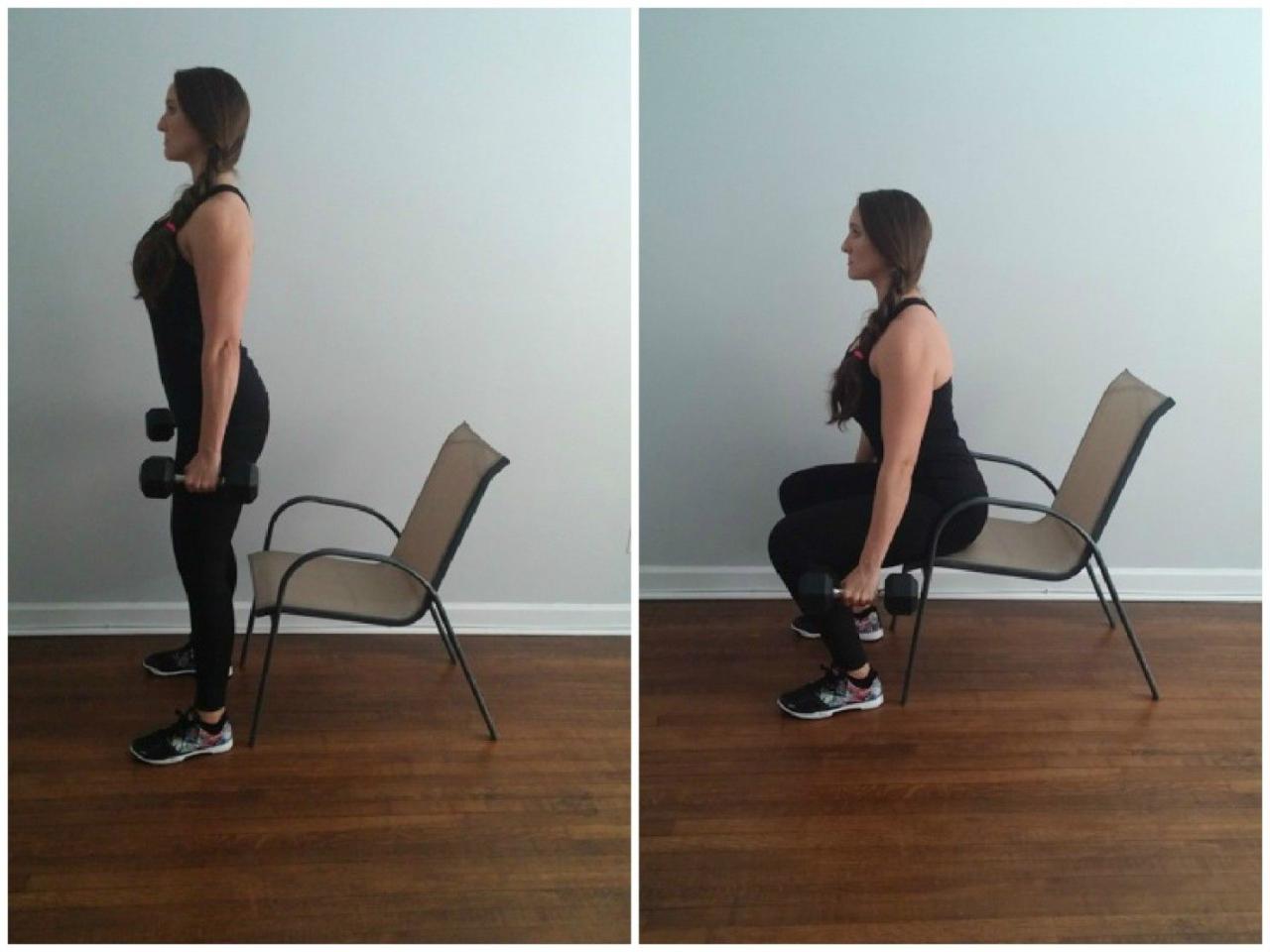
Before embarking on any new exercise program, especially one aimed at improving bone density, it’s crucial to consult with a healthcare professional. This step is not just a formality; it’s an essential safeguard for your well-being.
Benefits of Consulting a Healthcare Professional
Consulting a healthcare professional, such as a doctor or physical therapist, offers several significant benefits. They can create a personalized exercise plan tailored to your individual needs, ensuring safety and effectiveness. This personalized approach considers factors such as your current health condition, any pre-existing injuries or limitations, and your specific bone density needs.
Understanding Potential Risks and Contraindications
Certain exercises may pose risks or be contraindicated for individuals with specific conditions. For instance, high-impact exercises might be unsuitable for people with osteoporosis or a history of fractures. Consulting a healthcare professional allows them to identify potential risks and advise on safe alternatives.
They can also help you understand the proper form and technique for each exercise, minimizing the risk of injury.
Personalized Exercise Plans
A personalized exercise plan is designed to meet your specific needs and goals. It considers your current fitness level, bone density, and any health conditions you may have. This plan may include a combination of weight-bearing exercises, resistance training, and impact exercises, tailored to your individual requirements.
Closing Summary: Bone Density Building Exercises
Building strong bones is a journey, not a sprint. By incorporating bone density building exercises into your routine, you can significantly improve your bone health and reduce your risk of fractures. Remember to listen to your body, consult with a healthcare professional, and make gradual progress.
With dedication and the right approach, you can enjoy the benefits of strong, healthy bones for years to come.

